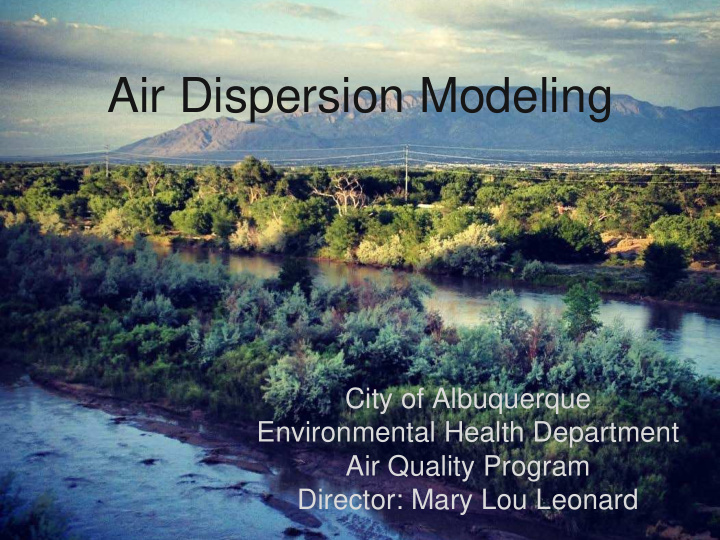



Air Dispersion Modeling City of Albuquerque Environmental Health Department Air Quality Program Director: Mary Lou Leonard
Protect Public Health • Models overestimate impacts of pollution emitted by industry • Compare those impacts to air quality standards • Purpose of overestimation is to assure standards won’t be violated
Connection to Permitting • Modeling used to set permit conditions – Hours of operation – Emission rates – Distance of equipment from fence
Analogy • Sprinkler system surrounded by buckets • Wind is important in distributing water • Measure depth of water
Inputs to a Dispersion Model Meteorology Terrain & Land Use Emissions Sources • Wind speed • Rural or urban • Rates • Source type • Wind direction • Elevations • Parameters • Hrs of operation • Temperature Downwash • Buildings WIND PROFILE Gravitational Settling CENTERLINE • Particle Size • Density Building VORTEX
Source Types: Point Source
Volume Source
Background Concentration • Background is everything else • Added to modeled impact • Cumulative impact is compared to air quality standards
Example of Standards Time Pollutant U.S. EPA Average PM 10 Annual -- 150 µg/m 3 24-hour 12 µg/m 3 PM 2.5 Annual 35 µg/m 3 24-hour
Guidelines • Federal: 40 CFR 51, a.k.a. Appendix W • NMED’s Air Dispersion Modeling Guidelines • Air Quality Program air dispersion modeling guidance on our web site.
Success • Air dispersion modeling is a successful tool for keeping Bernalillo County within standards. • Bernalillo County is in compliance with all air quality standards. – Public health is protected. – Enables economic growth.
Parting Thoughts • Model for worst case scenario – Highest production rate – Worst weather • Meeting standards protects public health and allows for economic growth • Legal obligation to issue permit
Recommend
More recommend